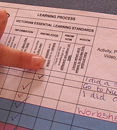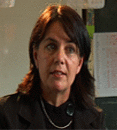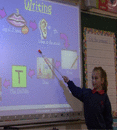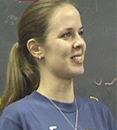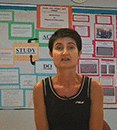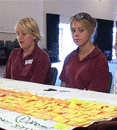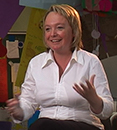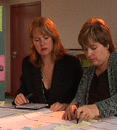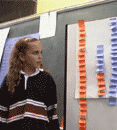Videos
Capacity Matrices in High School
Teachers and students at Mordialloc College describe how they plan learning projects self-assess and evaluate their learning progress using capacity matrices and resource matrices.
Capacity Matrices in Primary School
Lindy Podzweit and her year two students describe how they use Capacity Matrices to plan self-assess and evaluate their learning. Lindy describes how students progress through the four stages of learning: information knowledge know-how to wisdom.
Classroom Parking Lot. Year 4
Julia a year four student describes the use of a Parking Lot tool in her class to capture and address ideas about how the class is progressing.
Classroom processes (High School)
Students from Seaford 6-12 school describe how they plan and work together by documenting key classroom processes as a deployment flowchart.
Classroom processes (Primary School)
Students teachers and the principal from Plenty Parklands Primary School explain how they save time and effort by agreeing and documenting classroom processes.
CSV011a Quality Learning in a multi-age classroom
Case Study Video 011a. Quality learning in a single teacher multi-age classroom in a rural school.
CSV011b Plan-Do-Study-Act (PDSA) in a multi-age classroom
Case Study Video 011b. Quality learning in a single-teacher rural multi-age primary school. Using PDSA to improve the local park.
CSV012 Using a quality learning approach to address behaviour management in year 4.
Case Study Video 012. This is the story of a first year teacher using quality learning concepts and tools to address poor student behaviour.
CSV013 Quality Learning in Year 5/6 Mathematics
Case Study Video 013. Mr Phypers and his students discuss improving learning in his year 5/6 mathematics lessons.
CSV014f Applying the PDSA cycle to Physical Education
Case Study Video 014f. The Plan-Do-Study-Act cycle is used to improve year 6 students' experience of PE.
CSV015 Creating a shared direction
Case Study Video 015. Seaford 6-12 school engaged the school community in determining its future direction.
CSV016 Year 8 English in a small rural school
Case Study Video 016. Using the Quality Learning approach with year 8 English students in a small rural high school.
CSV017 Learning How to Learn in Primary School
Case Study Video 017. This case study describes the Warrnambool East Primary School's Learning How to Learn program.
CSV021 Capacity Matrices in the Early Years
Case Study Video 021. Lindy Podzwueit and her colleagues share the application and success using Capacity Matrices in the early years
CSV022 Primary School System Map
Case Study Video 022. Hargraves Public School engaged the community in establishing a shared direction by creating a System Map.
CSV023 Quality Learning in Year 7
Case Study Video 023. Over 150 Year 7 students learn together in the open-plan environment, where they are responsible for their learning
CSV024 Whole school approach to Quality Learning – Rural Primary School
Case Study Video 024. Romsey Primary School adopted a whole-school approach to quality.
CSV025 Whole school approach to Quality Learning – High School
Case Study Video 025. Seaford 6-12 School adopted the quality learning approach to improve student engagement and learning.
CSV031 Engaging reluctant learners
Case Study Video 031. Mungindi Central School is an isolated rural school that used the quality learning approach to engage reluctant learners.
CSV032 Whole school approach to Quality Learning – Urban Primary School
Case Study Video 032. Plenty Parklands Primary School adopted a school-wide approach to improving the quality of learning
CSV033 Improving systems and learning in year 2 at Roxburgh Homestead Primary School
Case Study Video 033. Rachelle Hedger worked with her colleagues and students to ensure learning was at the centre of everything done in her classroom
CSV034 Student directed learning in year 10
Case Study Video 034. Year 10 students take responsibility for their learning.
CSV035 Starting out with Quality Learning
Case Study Video 035. Progress made during the first ten weeks of adopting a Quality Learning approach.
CSV041 The Leander Way
Case Study Video 041. The remarkable story of the Leander Independent School District.
CSV051 Student School Improvement Teams at Hallett Cove R-12 School
Members of the Student Leadership Team at Hallett Cove R-12 School in South Australia contribute to school improvement using the PDSA cycle.
Deployment Flowchart for Spelling (Primary School)
A year two student from Sherbourne Primary School describes the Deployment Flowchart for the spelling process.
District performance data
The Senior Executive Director School Improvement from Leander Independent Schools District in Texas USA describes how they use four types of data to monitor and improve performance: people performance process and perception data.
Documenting school processes
Teachers from Romsey Primary School describe how they save time and effort by reviewing documenting and improving key school processes.
Drive out fear!
The Leander Independent School District has worked hard to build and sustain trusting relationships. In order to achieve this they have had to focus upon Demings advice to Drive Out Fear.
Ethical Principles
The Leander Independent School District developed their Ten Ethical Principles to drive their culture. The principles provide a foundation and reference point regarding how people treat each other across the District.
Job Description for everyone at Riverside Primary School
Ivan Webb principal of Riverside Primary School describes their job description. It applies to everyone at the school.
Loss Function Tool (Primary School)
A student describes how the Loss Function helped them agree how long to spend reading.
Plan-Do-Study-Act (PDSA): Year 1 writing
Jordan a year one student at Roxburgh Homestead Primary School describes how he uses the Plan-Do-Study-Act (PDSA) cycle to plan and improve his writing.
Planning with a Gantt Chart in High School
Students and teachers from Seaford 6-12 school describe how they use a Gantt chart to clarify plan and monitor their learning projects.
Preparing for the Quality Learning Seminar
This video explains very little preparation is required to attend the seminar, though it is recommended that attendees come as part of a team.
Process review
Ivan Webb principal of Riverside Primary School demonstrates how he works with his staff and students to review and improve key school processes after each implementation cycle.
Purpose of Hargraves Public School
Students and Hargraves Public School describe how they clarified and documented the purpose of the school.
School system documentation
Leaders teachers and support staff at Romsey Primary School describe how they have developed a comprehensive system of school documentation. Key school processes have been documented along with their associated pollicies and supporting documents. These documents are available to all staff.
Systems Thinking Across the School
The principal and students of Plenty Parklands Primary School discuss using a System Map to develop mutual agreement regarding the future direction of their school and learning.
Systems Thinking in Year 2
Rachelle Hedger a Year 2 teacher explains how she used Systems Thinking and a System Map with her class to improve learning and behaviour.
Teacher Capacity Matrix and Digital Learning Portfolio
Warwick Fraser describes how he uses a teacher Capacity Matrix and Digital Portfolio.
What happens after the Quality Learning Seminar?
David Langford provides advice to attendees regarding what to do after the seminar when they return to school.
What is the Quality Learning Seminar?
David Langford explains the four day Quality Learning Seminar, which has been attended by thousands of educators the world over.
Why do I come to school? Year 2
Isaa a year 2 student uses the Five Whys tool to understand and explain why she comes to school.
Why do I come to school? Year 4
Olivia from year 4 uses the Five Whys tool to understand and explain why she comes to school.
Most resources on this website are free. For some resources, such as this, we require you to register so that we may keep you informed of Quality Learning news and new resources. Should you choose, you will be able to opt out of our communications at any time.

